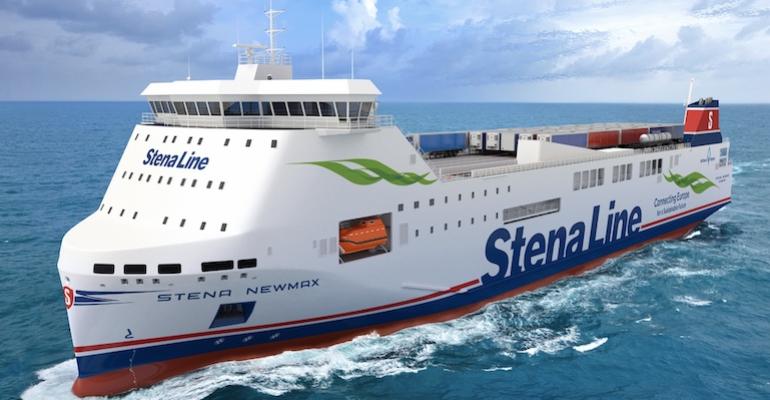The ships are to be built, through Stena RoRo, at Weihai in China and will be commissioned late in 2025.
The two ‘NewMax’ ships will be deployed on the route between Belfast and Heysham where they will boost capacity by about 80%, the company said. The two new freight ferries, with a length of 147 m and 2,800 lane metres of cargo capacity, will have 26-person crews and space for 12 passengers.
Stena Line is now working on securing supplies of methanol and sourcing e-methanol as part of its aim of moving over to renewable fuels and cutting carbon dioxide emissions by 30% by 2030. The company already has experience of methanol for bunkers: the Stena Germanica was converted to run on methanol eight years ago.
Stena Line revealed that it has also incorporated measures in the ships’ design to ensure that they will keep abreast of future technologies. These include preparations for electrification, provisions for battery operation, and scope to link to shore power facilities when they are available.
The ships will also have an unusual machinery arrangement incorporating three bow thrusters to ensure good manoeuvrability, particularly in Heysham where weather and tides can be disruptive. The vessels will also have a special engine/propeller setup to assist berthing in heavy weather.
Stena Line CEO, Niclas Mårtensson, said: “This investment shows our dedication to sustainability and our strategy of moving towards new sustainable fuels. The NewMax vessels will also meet the growing demand from customers, adding significant capacity to allow logistics operators to grow their business in the region.”
Copyright © 2024. All rights reserved. Seatrade, a trading name of Informa Markets (UK) Limited.
Add Seatrade Maritime News to your Google News feed.  |

